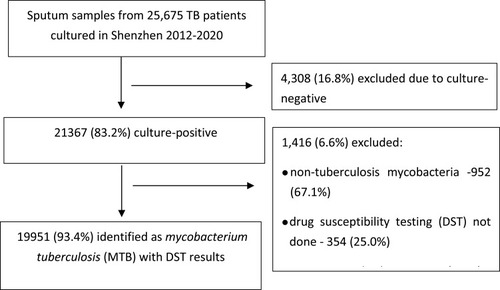Figures & data
Table 1 Diagnosis and Treatment Enrollment Cascade for MDR/RR-TB in Shenzhen, 2012–2020 [n (%)]
Table 2 Drug Resistance Patterns of 19,951 MTB Cases Stratified by Residential Status [n (%)]
Table 3 RR-TB and MDR-TB Rates Among 19,951 MTB Patients in Shenzhen, 2012–2020
Table 4 Multivariate Analysis on Predictors of MDR-TB and RR-TB
Figure 2 Trends in RR-TB and MDR-TB in Shenzhen during the 2012–2020 period.


